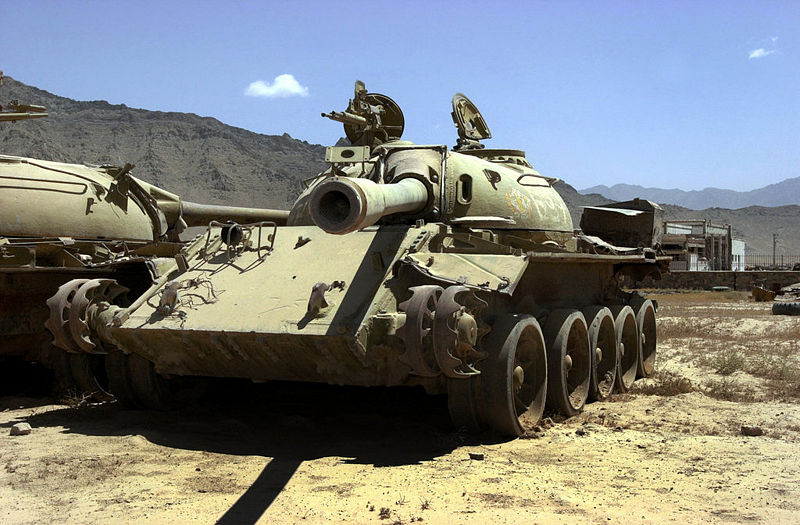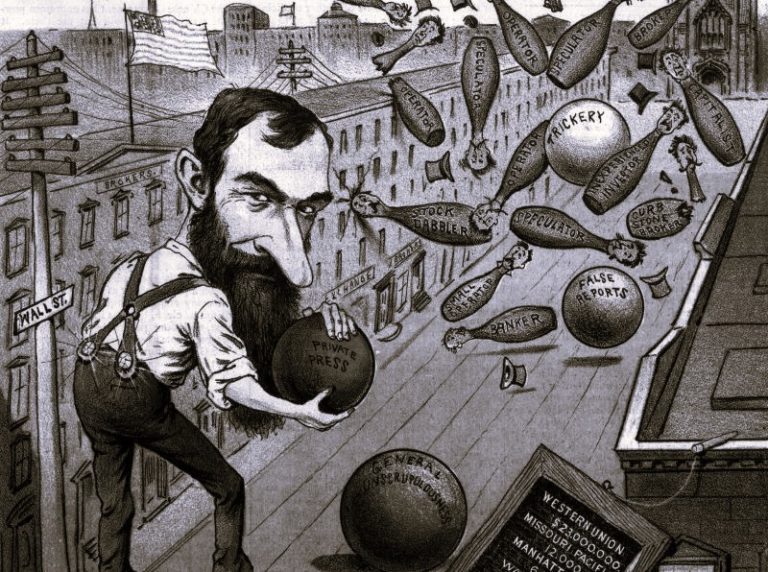
The war over-extended the capabilities of the Soviet empire, as other military engagements have helped to bring various empires down throughout history.

Curated/Reviewed by Matthew A. McIntosh
Public Historian
Brewminate
Introduction
The Soviet War in Afghanistan was a nine-year period involving the Soviet forces and the Mujahideen insurgents that were fighting to overthrow Afghanistan’s Marxist People’s Democratic Party of Afghanistan (PDPA) government. The Soviet Union supported the government while the rebels found support from a variety of sources including the United States (in the context of the Cold War) and Pakistan. The conflict was a proxy war between the two super-powers, who never actually met in direct confrontation.
The initial Soviet deployment of the 40th Army in Afghanistan began on December 25, 1979. The final troop withdrawal began on May 15, 1988, and ended on February 15, 1989. The heavy loss of life during the war was one of the factors that brought about the collapse of the Soviet Union, combined with the crippling cost of the war. The invasion can be seen as a product of Marxist expansionism, the desire to spread communism by any means. The war over-extended the capabilities of the Soviet empire, as other military engagements have helped to bring various empires down throughout history. The deterioration in the standard of living of Soviet citizens led to a public loss of support not only for the war but for the political system itself.
Background

The region today called Afghanistan has been a predominately Muslim country since 882 C.E. The country’s nearly impassable mountains and desert terrain is reflected in its ethnically and linguistically diverse population. Pashtuns are the largest ethnic group, along with Tajiks, Hazara, Aimak, Uzbeks, Turkmen, and other small groups.
Russian military involvement in Afghanistan has a long history, going back to Tsarist expansions in the so-called “Great Game” begun in the nineteenth century, such as the Panjdeh Incident. This interest in the region continued on through the Soviet era in Russia.
In February of 1979, the Islamic Revolution had ousted the U.S.-backed Shahs from Afghanistan’s neighbor, Iran. In the Soviet Union, Afghanistan’s northern neighbor, more than twenty percent of the population was Muslim. Many Soviet Muslims in Central Asia had tribal kinship relationships in both Iran and Afghanistan. The Soviet Union had also been rattled by the fact that since that February, the United States had deployed twenty ships, including two aircraft carriers, and the constant stream of threats of warfare between the U.S. and Iran.
March of 1979 also marked the signing of the U.S.-backed peace agreement between Israel and Egypt. The Soviet Union leadership saw the peace agreement between Israel and Egypt as a major step in the progression of U.S. power in the region. The Soviets viewed the treaty as not only a cessation in the hostilities between the two nations but also as some form of military agreement. In addition, America sold more than five thousand missiles to Saudi Arabia and was supplying the successful Yemeni resistance against communist factions. Also, the Soviet Union’s previously strong relations with Iraq had recently soured. Iraq, in June of 1978, begin buying French and Italian made weapons as opposed to Soviet weapons.[1]
The Saur Revolution
Mohammad Zahir Shah succeeded to the throne and reigned from 1933 to 1973. Zahir’s cousin, Mohammad Daoud Khan, served as Prime Minister from 1953 to 1963. The Marxist PDPA party was credited for significant growth in these years. In 1967, the PDPA split into two rival factions, the Khalq (Masses) faction headed by Nur Muhammad Taraki and Hafizullah Amin and the Parcham (Banner) faction led by Babrak Karmal.
Former Prime Minister Daoud seized power in an almost bloodless military coup on July 17, 1973, through charges of corruption and poor economic conditions. Daoud put an end to the monarchy but his attempts at economic and social reforms were unsuccessful. Intense opposition from the factions of the PDPA was sparked by the repression imposed on them by Daoud’s regime. With the purpose of ending Daoud’s rule, the factions of the PDPA reunified.
On April 27, 1978, the PDPA overthrew and executed Daoud along with members of his family. Nur Muhammad Taraki, Secretary General of the PDPA, became President of the Revolutionary Council and Prime Minister of the newly established Democratic Republic of Afghanistan.
Democratic Republic of Afghanistan
Factions Inside the PDPA
After the revolution, Taraki assumed the Presidency, Prime Ministership, and General Secretary of the PDPA. In reality, the government was divided along partisan lines, with President Taraki and Deputy Prime Minister Hafizullah Amin of the Khalq faction against Parcham leaders such as Babrak Karmal and Mohammad Najibullah. Within the PDPA, conflicts resulted in exiles, purges, and executions.
During its first 18 months of rule, the PDPA applied a Marxist-style program of reforms. Decrees setting forth changes in marriage customs and land reform were not received well by a population deeply immersed in tradition and Islam. Thousands of members of the traditional elite, the religious establishment and intelligentsia were persecuted. By mid-1978, a rebellion began in the Nuristan region of eastern Afghanistan and civil war spread throughout the country. In September 1979, Deputy Prime Minister of Afghanistan Hafizullah Amin seized power after a palace shootout that resulted in the death of President Taraki. Over 2 months of instability overwhelmed Amin’s regime as he moved against his opponents in the PDPA and the growing rebellion.
Soviet-Afghan Relations

After the Russian Revolution, as early as 1919, the Soviet government gave Afghanistan gratuitous aid in the form of a million gold rubles, small arms, ammunition, and a few aircraft to support the Afghan resistance to the British conquerors.
In 1924, the USSR again gave military aid to Afghanistan. They gave them small arms and aircraft and conducted training in Tashkent for cadre officers from the Afghan Army. Soviet-Afghan military cooperation began on a regular basis in 1956, when both countries signed another agreement. The Soviet Minister of Defense was now responsible for training national military cadres.
In 1972, up to 100 Soviet consultants and technical specialists were sent on detached duty to Afghanistan to train the Afghan armed forces. In May 1978, the governments signed another international agreement, sending up to 400 Soviet military advisers to Afghanistan.
In December 1978, Moscow and Kabul signed a bilateral treaty of friendship and cooperation that permitted Soviet deployment in case of an Afghan request. Soviet military assistance increased and the PDPA regime became increasingly dependent on Soviet military equipment and advisers.
With Afghanistan in a dire situation during which the country was under assault by an externally supported rebellion, the Soviet Union deployed the 40th Army in response to an official request from the government of Afghanistan. The 40th Army, which was under the command of Marshal Sergei Sokolov, consisted of three motorized rifle divisions, an airborne division, an assault brigade, two independent motorized rifle brigades, and five separate motorized rifle regiments. In all, the Soviet force was comprised of around 1,800 T-62s, 80,000 men, and 2,000 AFVs
The Afghan government repeatedly requested the introduction of Soviet forces in Afghanistan in the spring and summer of 1979. They requested Soviet troops to provide security and to increase the effectiveness of the fight against the Mujahideen. On April 14, the Afghan government requested that the USSR send 15 to 20 helicopters with their crews to Afghanistan, and on June 16, the Soviet government responded and sent a detachment of tanks, BMPs, and crews to guard the government of Afghanistan in Kabul and to secure the Bagram and Shindand airfields.
In response to this request, an airborne battalion, commanded by Lieutenant Colonel A. Lomakin, arrived at the Bagram airfield on July 7. They arrived without their combat gear, disguised as technical specialists. They were the personal bodyguard for Taraki. The paratroopers were directly subordinated to the senior Soviet military adviser and did not interfere in Afghan politics.
After a month, the DRA requests were no longer for individual crews and subunits, but were for regiments and larger units. On July 19, the Afghan government requested that two motorized rifle divisions be sent to Afghanistan. The following day, they requested an airborne division in addition to the earlier requests. They repeated these requests and variants to these requests over the following months right up to December 1979. However, the Soviet government was in no hurry to grant these requests.
U.S. Subversion
Overview
In June of 1975, fundamentalists attempted to overthrow the PDPA government. They started the insurgent movement in the Panjshir valley, some 100 kilometers north of Kabul, and in a number of other provinces of the country. However, government forces easily suppressed the insurgency and a sizable portion of the insurgents defected and settled in Pakistan, where they had total freedom of action. In May 1978, the insurgents found their first base in Pakistan to train armed bands for combat in Afghanistan. Afterwards, similar centers were found in Iran, Saudi Arabia, and Egypt.
Numerous violations by U.S.-backed Pakistan were reported. These included political activities and propaganda hostile to the government of Afghanistan taking place in Pakistan, border crossings of men and material from Pakistan to Afghanistan, cross-border firings, acts of sabotage, rocket attacks on major urban centers, violations of Afghan airspace by Pakistani aircraft, the continued presence in Pakistan of training camps and arms depots for Afghan insurgent groups, and direct involvement by Pakistani military personnel inside Afghanistan, as well as restrictions placed on refugees who wished to return to Afghanistan.
The former director of the CIA and current Secretary of Defense, Robert Gates, stated in his memoirs, From the Shadows, that American intelligence services began to aid the opposing factions in Afghanistan 6 months before the Soviet deployment. On July 3, 1979, U.S. President Jimmy Carter signed a directive authorizing the CIA to conduct covert propaganda operations against the revolutionary regime.
Carter adviser Zbigniew Brzezinski stated, “According to the official version of history, CIA aid to the Mujahadeen began during 1980, that is to say, after the Soviet army invaded Afghanistan, 24 Dec 1979. But the reality, secretly guarded until now, is completely otherwise.” Brzezinski himself played a fundamental role in crafting U.S. policy, which, unknown even to the Mujahideen, was part of a larger strategy “to induce a Soviet military intervention.” In a 1998 interview with Le Nouvel Observateur, Brzezinski recalled proudly:”That secret operation was an excellent idea. It had the effect of drawing the Soviets into the Afghan trap…” […] “The day that the Soviets officially crossed the border, I wrote to President Carter. We now have the opportunity of giving to the Soviet Union its Vietnam War.”[2]
The War as Jihad

Many Muslims regarded the struggle against the Soviets as a jihad, understood in this context as a defensive war. Muslims from elsewhere in the world volunteered to fight with the Mujahadeen. Training camps were established, allegedly with CIA help. One of the most prominent international volunteers was the Saudi millionaire, Osama bin Laden, who arrived in Afghanistan in 1979. Whether bin Laden had direct, personal contact with the CIA has been disputed. It is widely claimed that he did. A BBC source reports that he received “security training” from the CIA.[3] Bin Laden set up the Maktab al-Khidimat (MAK), which imported equipment to aid the struggle and recruited thousands of jihadists from around the world. Following the Soviet withdrawal, Osama bin Laden left Afghanistan to take up the cause of other struggles involving Muslims, although he later returned there as the guest of the new Taliban-led regime. Having operated with U.S. support during the Soviet-Afghan war, he subsequently denounced the U.S. for occupying “the Land of the Two Holy Places” (referring to the presence of U.S. troops in Saudi Arabia) and for supporting Israel.
The Soviet Deployment
Brotherly Aid

The Soviet Union decided to provide aid to Afghanistan in order to preserve its revolution. Soviet leaders, based on information from the KGB, felt that Amin destabilized the situation in Afghanistan. The KGB station in Kabul had warned following Amin’s initial coup against and murder of Taraki that his leadership would lead to “harsh repressions, and as a result, the activation and consolidation of the opposition.”[4]
The Soviets established a special commission on Afghanistan, of KGB chairman Yuri Andropov, Ponomaryev from the Central Committee, and Dmitry Ustinov, the Minister of Defense. In late October, they reported that Amin was purging his opponents, including Soviet sympathizers; his loyalty to Moscow was false; and that he was seeking diplomatic links with Pakistan and possibly China.
The last arguments to eliminate Amin were information obtained by the KGB from its agents in Kabul; supposedly, two of Amin’s guards killed the former president Nur Muhammad Taraki with a pillow, and Amin was suspected to be a CIA agent. The latter, however, is still disputed: Amin always and everywhere showed official friendliness to the Soviet Union. Soviet General Vasily Zaplatin, a political adviser at that time, claimed that four of the young Taraki’s ministers were responsible for the destabilization. However, Zaplatin failed to emphasize this enough.
Soviet Deployment
On December 22, the Soviet advisers to the Afghan Armed Forces advised them to undergo maintenance cycles for tanks and other crucial equipment. Meanwhile, telecommunications links to areas outside of Kabul were severed, isolating the capital. With a deteriorating security situation, large numbers of Soviet airborne forces joined stationed ground troops and began to land in Kabul. Simultaneously, Amin moved the offices of the president to the Tajbeg Palace, believing this location to be more secure from possible threats.
On December 27, 1979, 700 Soviet troops dressed in Afghan uniforms, including KGB OSNAZ and GRU SPETSNAZ special forces from the Alpha Group and Zenit Group, occupied major governmental, military, and media buildings in Kabul, including their primary target—the Tajbeg Presidential Palace.
That operation began at 7:00 p.m., when the Soviet Zenith Group blew up Kabul’s communications hub, paralyzing Afghani military command. At 7:15, the storm of Tajbeg Palace began, with the clear objective to depose and kill President Hafizullah Amin. Simultaneously, other objects were occupied (for example, the Ministry of Interior at 7:15). The operation was fully complete by the morning of December 28.
The Soviet military command at Termez, in Soviet Uzbekistan, announced on Radio Kabul that Afghanistan had been liberated from Amin’s rule. According to the Soviet Politburo they were complying with the 1978 Treaty of Friendship, Cooperation and Good Neighborliness and that Amin was executed by a tribunal for his crimes.
Soviet ground forces, under the command of Marshal Sergei Sokolov, entered Afghanistan from the north on December 27. In the morning, the Vitebsk parachute division landed at the airport at Bagram and the deployment of Soviet troops in Afghanistan was underway. Within two weeks, a total of five Soviet divisions had arrived in Afghanistan: The 105th Airborne Division in Kabul, the 66th Motorized Brigade in Herat, the 357th Motorized Rifle Division in Kandahar, the 16th Motorized Rifle Division based in northern Badakshan, and the 306th Motorized Division in the capital. In the second week alone, Soviet aircraft had made a total of 4,000 flights into Kabul.[5]
Soviet Operations

The initial force entering the country consisted of three motor rifle divisions (including the 201st), one separate motor rifle regiment, one airborne division, 56th Separate Air Assault Brigade, and one separate airborne regiment.[6] Following the deployment, the Soviet troops were unable to establish authority outside Kabul. As much as 80 percent of the countryside still escaped effective government control. The initial mission, to guard cities and installations, was expanded to combat the anti-communist Mujahideen forces, primarily using Soviet reservists.
Early military reports revealed the difficulty which the Soviet forces encountered in fighting in mountainous terrain. The Soviet Army was unfamiliar with such fighting, had no counter-insurgency training, and their weaponry and military equipment, particularly armored cars and tanks, were sometimes ineffective or vulnerable in the mountainous environment. Heavy artillery was extensively used when fighting rebel forces.
The Soviets used helicopters (including Mil Mi-24 Hind helicopter gunships) as their primary air attack force, which was regarded as the most formidable helicopter in the world, supported with fighter-bombers and bombers, ground troops, and special forces.
The inability of the Soviet Union to break the military stalemate, gain a significant number of Afghan supporters and affiliates, or to rebuild the Afghan Army, required the increasing direct use of its own forces to fight the rebels. Soviet soldiers often found themselves fighting against civilians due to the elusive tactics of the rebels. They did repeat many of the American Vietnam mistakes, winning almost all of the conventional battles, but failing to control the countryside.
World Reaction
U.S President Jimmy Carter indicated that the Soviet incursion was “the most serious threat to the peace since the Second World War.” Carter later placed an embargo on shipments of commodities such as grain and high technology to the Soviet Union from the U.S. The increased tensions, as well as the anxiety in the West about masses of Soviet troops being in such proximity to oil-rich regions in the gulf, effectively brought about the end of detente.
The international diplomatic response was severe, ranging from stern warnings to a boycott of the 1980 Summer Olympics in Moscow. The invasion, along with other events, such as the revolution in Iran and the U.S. hostage stand-off that accompanied it, the Iran-Iraq war, the 1982 Israeli invasion of Lebanon, the escalating tensions between Pakistan and India, and the rise of Middle East-born terrorism against the West, contributed to making the Middle East an extremely violent and turbulent region during the 1980s.
Babrak Karmal’s government lacked international support from the beginning. The foreign ministers of the Organization of the Islamic Conference deplored the entrance and demanded Soviet withdrawal at a meeting in Islamabad in January 1980. The United Nations General Assembly voted by 104 to 18 with 18 abstentions for a resolution which “strongly deplored” the “recent armed intervention” in Afghanistan and called for the “total withdrawal of foreign troops” from the country. However, this resolution was interpreted as illegal because it meddled in the internal affairs of Afghanistan. Only the Afghan government had the right to determine the status of Soviet troops. Many non-aligned countries such as India, Algeria, Iraq, Syria, Libya, and Finland did not support the illegal resolution put forth by the General Assembly. The Non-Aligned Movement itself was sharply divided between those that believed the Soviet deployment to be legal and others who considered the deployment an invasion.
Action by the United Nations Security Council was impossible because the Soviets had veto power, but the United Nations General Assembly regularly passed resolutions opposing the Soviet occupation.
Afghan Insurrection

By the mid-1980s, the Afghan resistance movement, receptive to assistance from the United States, United Kingdom, China, Saudi Arabia, Pakistan, and others, contributed to Moscow’s high military costs and strained international relations. Thus, Afghan guerrillas were armed, funded, and trained mostly by the U.S. and Pakistan. The U.S. viewed the conflict in Afghanistan as an integral Cold War struggle, and the CIA provided assistance to anti-Soviet forces through the Pakistani ISI, in a program called Operation Cyclone.
Of particular significance was the donation of American-made FIM-92 Stinger anti-aircraft missile systems, which increased aircraft losses of the Soviet Air Force. However, many field commanders, including Ahmad Shah Massoud, stated that the Stingers’ impact was much exaggerated. Also, while guerrillas were able to fire at aircraft landing at and taking off from airstrips and airbases, anti-missile flares limited their effectiveness.
The Afghan insurgents employed chemical weapons in strength. They used an unstable poisonous substance that acted as an irritant. The Afghan resistance resorted to terrorist methods as well. The Mujahideen leaders paid great attention to sabotage and terrorist activities. The more common types of sabotage included damaging power lines, knocking out pipelines, radio stations, blowing up government office buildings, air terminals, hotels, cinemas, and so on. From 1985 through 1987, over 1800 terrorist acts were recorded. In the border region with Pakistan, the mujahideen would often launch 800 rockets per day. Between April 1985 and January 1987, they carried out over 23,500 shelling attacks on government targets. The mujahideen surveyed firing positions that they normally located near villages within the range of Soviet artillery posts. They put the villagers in danger of death from Soviet retaliation. The mujahideen used mine warfare heavily. Often, they would enlist the services of the local inhabitants and even children.
They systematically targeted civilian infrastructure and government installations. They concentrated on knocking out bridges, closing major roads, destroying convoys, disrupting the electric power system and industrial production, and attacking police stations and Soviet military installations and air bases. They assassinated government officials and PDPA members. They laid to siege small rural outposts. In March 1982, a bomb exploded at the Ministry of Education, damaging several buildings. In the same month, a widespread power failure darkened Kabul when a pylon on the transmission line from the Naghlu power station was blown up. In June 1982, a column of about 1000 young party members sent out to work in the Panjshir valley were ambushed within 20 miles of Kabul, with heavy loss of life. On September 4, 1985, terrorists shot down a domestic Bakhtar Airlines plane as it took off from Kandahar airport, murdering all 52 people aboard.
Terrorist groups had three to five men in each. After they received their mission to murder this or that government statesman, they busied themselves with studying his pattern of life and its details and then selecting the method of fulfilling their established mission. They practiced shooting at automobiles, shooting out of automobiles, laying mines in government accommodation or houses, using poison, and rigging explosive charges in transport.
Pakistan’s Inter-Services Intelligence (ISI) and Special Service Group (SSG) were actively involved in the conflict, and in cooperation with the CIA and the United States Army Special Forces supported the armed struggle against the Soviets.
In May 1985, the seven principal rebel organizations formed the Seven Party Mujahideen Alliance to coordinate their military operations against the Soviet army. Late in 1985, the groups were active in and around Kabul, unleashing rocket attacks and conducting operations against the communist government.
By mid-1987, the Soviet Union announced it was withdrawing its forces. Sibghatullah Mojaddedi was selected as the head of the Interim Islamic State of Afghanistan, in an attempt to reassert its legitimacy against the Moscow-sponsored Kabul regime. Mojaddedi, as head of the Interim Afghan Government, met with then President of the United States George H.W. Bush, achieving a critical diplomatic victory for the Afghan resistance.
Defeat of the Kabul government was their solution for peace. This confidence, sharpened by their distrust of the UN, virtually guaranteed their refusal to accept a political compromise.
International Involvement and Aid to the Afghan Insurrection
The deployment of Soviet troops in Afghanistan obstructed Pakistan’s efforts to dominate Afghanistan by proxy. United States President Jimmy Carter had accepted the view that “Soviet aggression” could not be viewed as an isolated event of limited geographical importance but had to be contested as a potential threat to the Persian Gulf region. The uncertain scope of the final objective of Moscow in its sudden southward plunge made the American stake in an independent Pakistan all the more important.
After the Soviet deployment, Pakistan’s military dictator General Muhammad Zia-ul-Haq started accepting financial aid from the Western powers to aid the Mujahideen. The United States, the United Kingdom, and Saudi Arabia became major financial contributors to General Zia, who, as ruler of a neighboring country, greatly helped by ensuring the Afghan resistance was well-trained and well-funded.
Pakistan’s Inter-Services Intelligence and Special Service Group now became actively involved in the conflict against the Soviets. After Ronald Reagan became the new United States President in 1981, aid for the Mujahideen through Zia’s Pakistan significantly increased. In retaliation, the KHAD, under Afghan leader Mohammad Najibullah, carried out (according to the Mitrokhin archives and other sources) a large number of operations against Pakistan, which also suffered from an influx of weaponry and drugs from Afghanistan. In the 1980s, as the front-line state in the anti-Soviet struggle, Pakistan received substantial aid from the United States and took in millions of Afghan (mostly Pashtun) refugees fleeing the Soviet occupation. Although the refugees were controlled within Pakistan’s largest province, Balochistan under then-martial law ruler General Rahimuddin Khan, the influx of so many refugees into several other regions had a heavy impact on Pakistan and its effects continue to this day. Despite this, Pakistan played a significant role in the eventual withdrawal of Soviet military personnel from Afghanistan.
Soviet Withdrawal from Afghanistan

The toll in casualties, economic resources, and loss of support at home increasingly felt in the Soviet Union was causing criticism of the occupation policy. Leonid Brezhnev died in 1982, and after two short-lived successors, Mikhail Gorbachev assumed leadership in March 1985. As Gorbachev opened up the country’s system, it became more clear that the Soviet Union wished to find a face-saving way to withdraw from Afghanistan.
The government of President Karmal, established in 1980, and identified by many as a puppet regime, was largely ineffective. It was weakened by divisions within the PDPA and the Parcham faction, and the regime’s efforts to expand its base of support proved futile.
Moscow came to regard Karmal as a failure and blamed him for the problems. Years later, when Karmal’s inability to consolidate his government had become obvious, Mikhail Gorbachev, then General Secretary of the Soviet Communist Party, said:
The main reason that there has been no national consolidation so far is that Comrade Karmal is hoping to continue sitting in Kabul with our help.[7]
In November 1986, Mohammad Najibullah, former chief of the Afghan secret police (KHAD), was elected president and a new constitution was adopted. He also introduced, in 1987, a policy of “national reconciliation,” devised by experts of the Communist Party of the Soviet Union, and later used in other regions of the world. Despite high expectations, the new policy neither made the Moscow-backed Kabul regime more popular, nor did it convince the insurgents to negotiate with the ruling government.
Informal negotiations for a Soviet withdrawal from Afghanistan had been underway since 1982. In 1988, the governments of Pakistan and Afghanistan, with the United States and Soviet Union serving as guarantors, signed an agreement settling the major differences between them, known as the Geneva accords. The United Nations set up a special Mission to oversee the process. In this way, Najibullah had stabilized his political position enough to begin matching Moscow’s moves toward withdrawal. On July 20, 1987, the withdrawal of Soviet troops from the country was announced. The withdrawal of Soviet forces was planned out by Lt. Gen. Boris Gromov, who, at the time, was the commander of the 40th Army.
Among other things, the Geneva accords identified the U.S. and Soviet non-intervention with internal affairs of Pakistan and Afghanistan and a timetable for full Soviet withdrawal. The agreement on withdrawal held, and on February 15, 1989, the last Soviet troops departed on schedule from Afghanistan.
Official Soviet Personnel Strengths and Casualties

Between December 25, 1979, and February 15, 1989, a total of 620,000 soldiers served with the forces in Afghanistan (though there were only 80,000-104,000 force at one time in Afghanistan). 525,000 in the Army, 90,000 with border troops and other KGB sub-units, 5,000 in independent formations of MVD Internal Troops and police. A further 21,000 personnel were with the Soviet troop contingent over the same period doing various white collar or manual jobs.
The total irrecoverable personnel losses of the Soviet Armed Forces, frontier, and internal security troops came to 14,453. Soviet Army formations, units, and HQ elements lost 13,833, KGB sub units lost 572, MVD formations lost 28 and other ministries and departments lost 20 men. During this period, 417 servicemen were missing in action or taken prisoner; 119 of these were later freed, of whom 97 returned to the USSR and 22 went to other countries.
There were 469,685 sick and wounded, of whom 53,753 or 11.44 percent, were wounded, injured, or sustained concussion and 415,932 (88.56 percent) fell sick. A high proportion of casualties were those who fell ill. This was because of local climatic and sanitary conditions, which were such that acute infections spread rapidly among the troops. There were 115,308 cases of infectious hepatitis, 31,080 of typhoid fever and 140,665 of other diseases. Of the 11,654 who were discharged from the army after being wounded, maimed, or contracting serious diseases, 92 percent, or 10,751 men were left disabled.[8]
Material losses were as follows:
- 118 jet aircraft
- 333 helicopters
- 147 main battle tanks
- 1,314 IFV/APCs
- 433 artillery and mortars
- 1,138 radio sets and command vehicles
- 510 engineering vehicles
- 11,369 trucks and petrol tankers
Afghan Civil War (1989-1992)

The civil war continued in Afghanistan after the Soviet withdrawal. The Soviet Union left Afghanistan deep in winter with intimations of panic among Kabul officials. The Afghan Resistance was poised to attack provincial towns and cities and eventually Kabul, if necessary.
Najibullah’s regime, though failing to win popular support, territory, or international recognition, was able to remain in power until 1992. Kabul had achieved a stalemate which exposed the Mujahedin’s weaknesses, political and military. For nearly three years, Najibullah’s government successfully defended itself against Mujahedin attacks, factions within the government had also developed connections with its opponents. According to Russian publicist Andrey Karaulov, the main reason why Najibullah lost power was the fact Russia refused to sell oil products to Afghanistan in 1992, for political reasons (the new Russian government did not want to support the former communists) and effectively triggered a blockade.
The defection of General Abdul Rashid Dostam and his Uzbek militia, in March 1992, seriously undermined Najibullah’s control of the state. In April, Kabul ultimately fell to the Mujahedin because the factions in the government had finally pulled it apart.
Najibullah lost internal control immediately after he announced his willingness, on March 18, to resign in order to make way for a neutral interim government. Ironically, until demoralized by the defections of its senior officers, the Afghan Army had achieved a level of performance it had never reached under direct Soviet tutelage.
Grain production declined an average of 3.5 percent per year between 1978 and 1990 due to sustained fighting, instability in rural areas, prolonged drought, and deteriorated infrastructure. Soviet efforts to disrupt production in rebel-dominated areas also contributed to this decline. Furthermore, Soviet efforts to centralize the economy through state ownership and control, and consolidation of farmland into large collective farms, contributed to economic decline.
During the withdrawal of Soviet troops, Afghanistan’s natural gas fields were capped to prevent sabotage. Restoration of gas production has been hampered by internal strife and the disruption of traditional trading relationships following the dissolution of the Soviet Union.
Appendix
Notes
- David Gibbs, “Does the USSR Have a ‘Grand Strategy’? Reinterpreting the Invasion of Afghanistan,” Journal of Peace Research, 24(4) (Dec. 1987): 365-379.
- Le Nouvel Observateur, Interview with Zbigniew Brzezinsk. Retrieved August 6, 2007.
- BBC, Who is Osama bin Laden? Retrieved August 26, 2007.
- Martin Walker, The Cold War: A History (New York: Henry Holt & Co, 1995).
- Robert Fisk, The Great War for Civilisation: the Conquest of the Middle East (London: Alfred Knopf, 200).
- Carey Schofield, The Russian Elite (London: Greenhill Books, 1993).
- Niels Annen, Echoes of the Soviet Surge: The West’s war in Afghanistan increasingly resembles the Soviet Union’s. March 2, 2011. Retrieved October 14, 2015.
- G.F. Krivosheev, Soviet Casualties and Combat Losses in the Twentieth Century (London: Greenhill Books, 1997).
References
- Andrew, Christopher and Vasili, Mitrokhin. The Sword and the Shield: The Mitrokhin Archive and the Secret History of the KGB. New York: Basic Books, 1999.
- Bergen, Peter L. Holy War, Inc.: Inside the Secret World of Osama Bin Laden. New York: Free Press, 2001.
- Borovik, Artyom The Hidden War: A Russian Journalist’s Account of the Soviet War in Afghanistan. New York: Atlantic Monthly Press, 1990.
- Crile, George Charlie Wilson’s War: The Extraordinary Story of the Largest Covert Operation in History. New York: Atlantic Monthly Press, 2003.
- Courtois, Stephane. Le livre noir du Communisme. Paris: R. Laffont, 1997.
- Fisk, Robert. The Great War for Civilisation: the Conquest of the Middle East. London: Alfred Knopf, 2005.
- Grau, Lester W. The Soviet-Afghan War: How a Super Power Fought and Lost. Lawrence, KS: University Press of Kansas, 2002.
- Kakar, M. Hassan. Afghanistan: The Soviet Invasion and the Afghan Response, 1979-1982. Berkeley: University of California Press, 1995 ISBN 978=0585249766
- Kaplan, Robert D. Soldiers of God: With Islamic Warriors in Afghanistan and Pakistan. New York: Vintage, 2001.
- Krivosheev, G.F. Soviet Casualties and Combat Losses in the Twentieth Century. London: Greenhill Books, 1997.
- Lohbeck, Kurt. Holy War, Unholy Victory: Eyewitness to the CIA’s Secret War in Afghanistan. Washington, DC: Regnery Publishing, 1993.
- Prados, John. Presidents’ Secret Wars. New York: W. Morrow, 1986.
- Schofield, Carey. The Russian Elite. London: Greenhill Books, 1993.
- Walker, Martin. The Cold War: A History. New York: Henry Holt & Co, 1995.
Originally published by New World Encyclopedia, 10.14.2015, under a Creative Commons Attribution-ShareAlike 3.0 Unported license.







